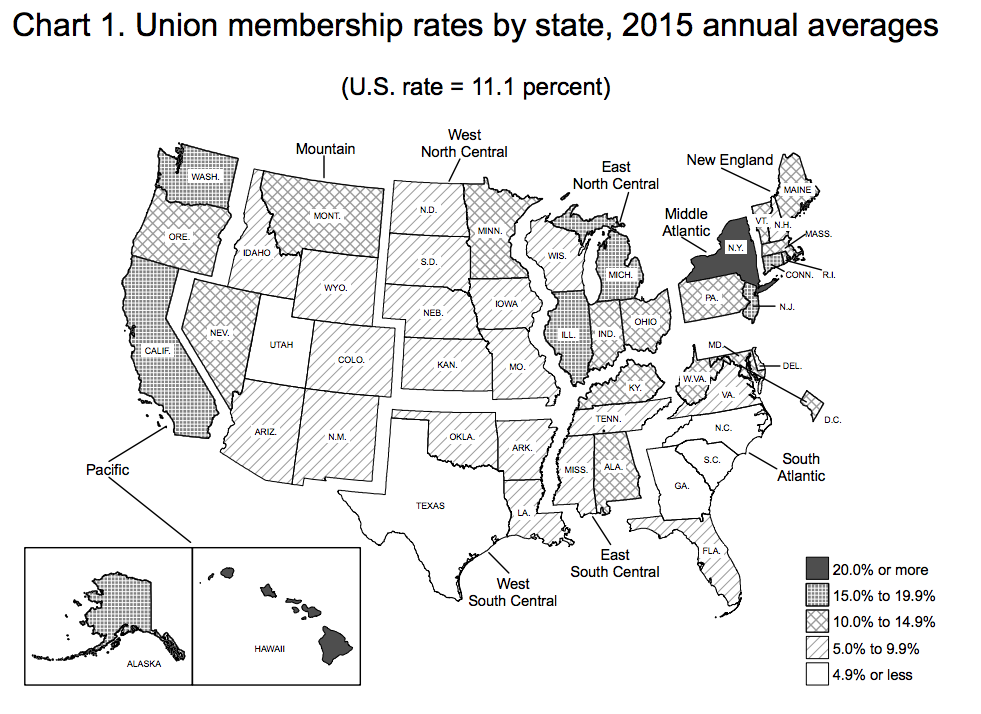The Supreme Court reached a tie yesterday in its decision over whether government employees must pay fees to unions they haven’t joined, but whose bargaining efforts would, in theory, benefit them. The deadlock means fees will stand, so it’s a victory for union supporters. Experts have called removing mandatory fees “a major blow to labor unions“; the Atlantic asked if it could be “the end of public-employee unions.”
How did America’s public-sector unions end up in such a precarious position in the first place? It’s true labor unions in the United States have been declining in membership since the mid-1950s. But through the ’60s and ’70s, unions representing public employees, such as teachers and bus drivers, only grew. Every year since 1977, about 40 percent of government employees have been unionized, forming a “stronghold” of American labor organizing, wrote Wayne State University researchers Michael Goldfield and Amy Bromsen in the 2013 issue of the Annual Review of Political Science.
When the Great Recession hit, however, politicians took aim at public-sector jobs and unions to try to ease strained budgets, Goldfield and Bromsen write.

Recent Republican presidential candidates have been active in undermining unions for government employees. In 2011, Ohio Governor John Kasich proposed banning public employees from striking. Kasich also advocated for allowing non-union members to forgo so-called “agency fees,” which non-members still pay to unions for the bargaining they do on behalf of all employees. Though Kasich’s legislation was repealed after unions organized large demonstrations, that same year, Wisconsin Governor Scott Walker was successful in passing strict limits to public employees’ collective bargaining and a ban on agency fees.
But it’s not just Republicans. Democrats aren’t necessarily pro-union, either, especially when it comes to teachers’ unions like the one in this latest Supreme Court case. In 2012, Chicago’s Democratic mayor, Rahm Emanuel, proposed a number of austerity measures for the city’s public schools that Goldfield and Bromsen called “fundamental attacks on the unions and on teacher job security and seniority.” The Chicago Teachers Union struck in response, leading to a settlement.
Meanwhile, the decline of private-sector unions hasn’t helped. One of the hardest-hit parts of the American economy in the past few decades has been manufacturing, an industry that was historically well unionized. As factory workers lost jobs and couldn’t find new ones, they “have been transformed from solidaristic union members to voters and taxpayers, often with little affinity for public employees who have retained those rights,” Goldfield and Bromsen write.
What will happen next as unions of all kinds decline in America? Research suggests this trend will hit some already disadvantaged Americans especially hard. Women, black Americans, and Hispanic Americans receive especially large pay boosts from their union memberships. With fewer, weaker unions, gender and racial pay gaps may linger for longer.




